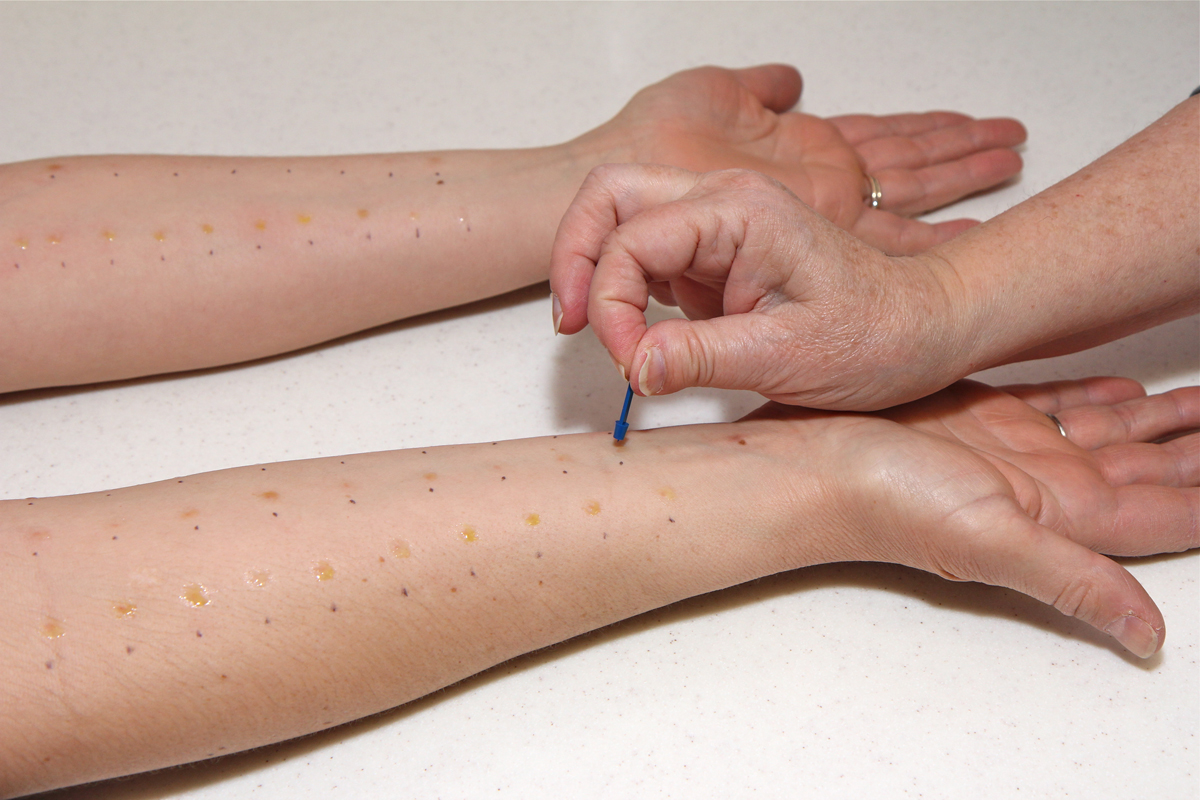Skin testing for allergies has become the most reliable method of testing. They’ve been in use successfully for over 100 years and combined with a physical examination and a patient’s medical history, can provide for accurate and precise information than a blood test. For people that suffer from untreated symptoms every year, a simple allergy skin test could properly diagnose their allergens and get them started on a proper treatment. But you may be asking yourself – what happens during a skin test?
The Procedure
Once the allergens have been placed, the next step is to wait for any reactions. This usually happens within twenty minutes. If a reaction occurs on the skin, the result is positive. The reaction will usually be a small bump like a bug bite, and it indicates that you are allergic to that specific allergen. After your results have been read and examined, the provider can then determine a proper diagnosis and treatment plan for your allergies.
Following a skin prick test, some patients may also receive an intradermal test. It involves injecting a small amount of the allergen underneath the skin surface through a thin needle.

Why Is This Effective?
By definition an allergy is an overreaction from your immune system to a foreign substance you touched, inhaled or ate. It will produce and send antibodies called Immunoglobulin E to cells and release chemicals, which cause the allergic reaction. Skin tests are a simple way to cause these reactions in a small, safe and controlled environment. Mast cells are located in large numbers just below your skin’s surface, making them the best target for quick and accurate testing and diagnosis.
When Is A Good Age To Be Tested?
Both children and adults are able to have an allergy skin test done – age is not a factor. Sometimes even infants will get tested. Many physicians may recommend early testing for children if they have respiratory conditions like asthma. Early testing can help provide guidance and recommendations to avoid triggers as they grow up. It can even be beneficial as a child ages to be retested, since there can be changes to their immune system with time. In the United States, 13.5% of children have skin allergies, according to National Health Interview Survey data. A skin test is a simple but effective method of determining a child’s allergies early on to prevent unnecessary suffering from symptoms growing up.
Put an end to your mysterious allergy suffering. Learn more about our allergy testing or schedule an appointment today to begin your allergy treatment.






